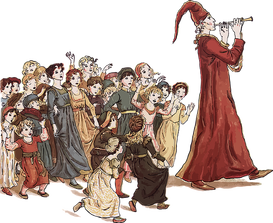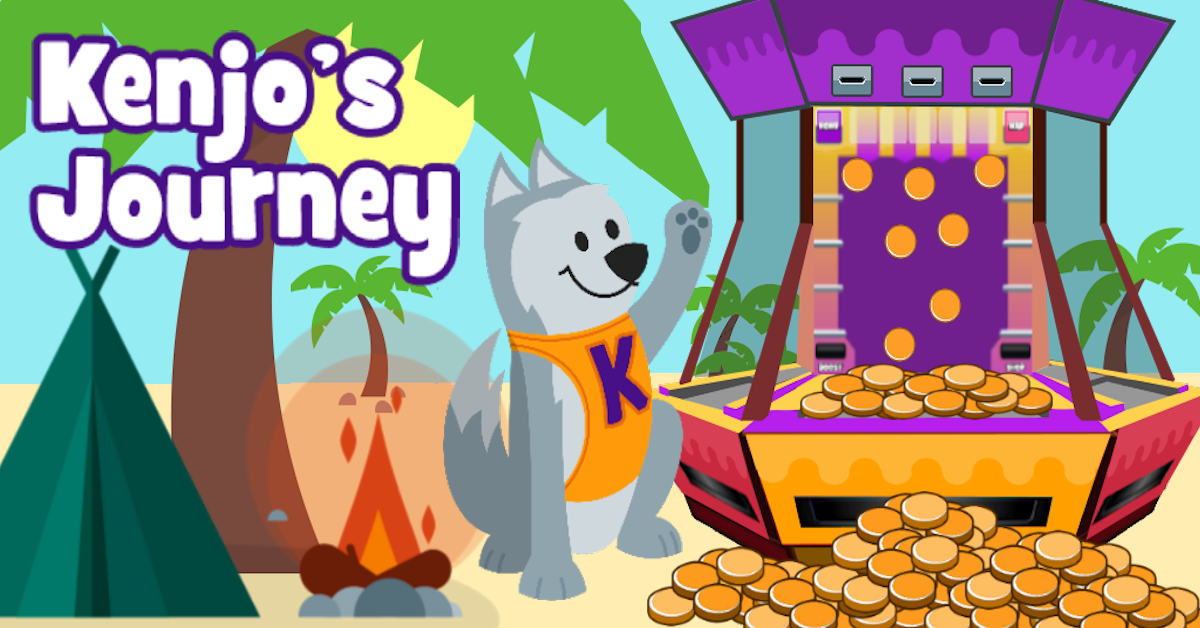We really love the character and story we've created for this game and it adds lots more depth to the coin dropping gameplay.
|
We're happy to have finished and released Kenjo's Journey Coin Pusher to the Google Play store. Kenjo's Journey is an exciting and realistic arcade style coin pusher game for Android. Win prizes, discover scratch cards, play the prize claw grab game and help Kenjo the dog explore all 120 levels.
We really love the character and story we've created for this game and it adds lots more depth to the coin dropping gameplay.
0 Comments
 Our new coin pusher is finally nearing completion. It has taken longer than anticipated as it's had a major overhaul, new and improved coin physics, better game play, and lots of new features. We are particularly happy with the great graphics we have had done by a fabulous artisit called Andy Carolan. We love his art style and he was so good to work with. Can highly recommend him. We are also really pleased with our new map that you follow as you go up the levels and which creates a pathway for the game and a resulting desitination which completes a story. Beta testing to start soon.
Leave the experiment running for a few days and after a week or so you'll get a report on the performance of your new asset versus the original. This is a great tool for optimising the number of installs your game or application achieves. The ExperimentWhen browsing the search results for various keywords associated with Pish Pish Penny Pusher, I always try to look at our game listing and its associated assets with fresh eyes. While doing this I started to notice that our game's icon had more white space around it than other similar games on the store and it got me thinking, should it be bigger? Of course there is a very easy way to answer this question, run an app store experiment! I released the new, larger version to 50% of people that visited the store and waited to see what happened. What difference do you think it would made? The ResultsDuring the five day testing period, the larger icon achieved nearly thirty percent more installs than the smaller icon.
That's a massive boost to the number of installs from a seemingly minor change to the icon. It really underscores how important the app store icon is to your app's success and shows how important it is to test every variant for performance. The story of Pish Posh Push In 2016 I was looking for a new game to create to follow on from the success I'd had with my slot machine games. Those games have been amazing in terms of downloads, I still find it crazy that millions of people around the world have downloaded and played games that I've made. Those games were less successful from a commercial point of view, whilst they covered their development costs, they only generated revenues of a few pence per user. That's about the level of revenue you can expect from a free game funded solely by adverts, so you have to be lucky and get massive download volumes to get a decent return on your investment. That volume of downloads has become harder to reach over the years as the app stores have matured, choice has increased and niches have been filled. My first two slot machine games reached millions of users organically, but my last one only reached a fraction of that. My goal at this time was to become a full-time game developer, so for my next game I wanted to improve my revenue per user to a level where it could support me, I decided that I'd create a game designed from the ground up as a freemium game. I felt that a coin pusher game would fit in well with my portfolio of games so I started work on Pish Posh Penny Pusher and by August 2017 I had a product that I felt was ready for release. The LaunchI've written a previous post about the strategy I used to get the initial acquisition of users started, and these app store optimisations accomplished their goal of getting my game towards the top of the results for my targeted search terms. Between August 2017 and April 2018 the game had a steady growth in its installation base. This was helped by an update that took the game from the original 7 levels up to 14 levels. That update had been prioritised as only a few weeks after launch I was already getting feedback that players had completed the game and wanted more. The game peaked at 29k active installations at the beginning of April 2018. Then suddenly and with no apparent cause the number of active installs went into a sudden decline. I still don't know what changed, I can only imagine that the game was featuring in some list on Google Play somewhere and then it stopped, or perhaps there was some search algorithm that changed. This is one of the risks with relying on organic user acquisition and an opaque store algorithm for your growth. The DeclinePish Posh Penny Pusher went from gaining about 200 new users per day immediately to losing that same amount each day. With less than 30k active users there is only so long that you can sustain that level of contraction. Although it was quite a worrying time, I always had faith in the game and felt that I could turn things around. The primary problem was user retention, fourteen levels was just not enough to keep people engaged, and to extend the gameplay time some of the levels took a long time to complete which also had a negative effect on retention. There is a golden rule for making successful freemium games, first address user retention, it is your highest priority, if you can't keep your players then you can't effectively monetise them. Once you have good retention, your next priority is to optimise your monetisation. Finally, only once you are retaining and monetising effectively should you consider the problem of acquiring new users. The obvious argument against this is that you have to acquire new users first of all in order to know if you can retain and monetise them. To address that I might add that the very first step is to have an organic user acquisition strategy in place as I did. However you choose to do that you should be able to get enough players to be able to start measuring retention and monetisation. To address the retention problem with Pish Posh Push we worked through the summer of 2018 on a large expansion that took the game from 14 levels up to 140 levels, a ten times increase. It took a long time and was difficult because I had not originally designed the game to have that many levels. It is possible to see the fact that I re-engineered the game in this way after release by looking at the level structure. This was a lesson that was learned the hard way, freemium games should not have an obvious ending, or if they do, it needs to take a long (ten times as long) time to get there. The knockbackThe release of the update expanding the game to 140 levels halted the decline at about 20k active installations and the numbers slowly started to rise again by about 30 users per day. Then on September 15 2018, just after I had achieved my goal of becoming a full time game developer, the revenue I was getting from adverts within the game suddenly and without warning dropped by 80%, This was mainly revenue from rewarded video ads which are one of the primary monetisation channels. Even worse was that players were trying to watch adverts and less than half were being given ads to watch. This caused my retention figures to start declining again and was the primary complaint in player reviews. My mistake was to be entirely dependent upon Google Admob for my in-game advertising. I immediately started work on a two pronged strategy to fix the problem. The first angle of attack was to remove the requirement for an advert to actually be shown for the player to get their coins. I added a "Movie pass" feature to the game where if Admob's server responded to say there was no advert available, the game would give the player their coins anyway. The other approach was to take a crash course in ad network mediation and to get more ad networks into the game as alternatives to Admob. Luckily one of the first ones that I tried was Facebook Audience Network and this has been my ad network of choice since then for rewarded video adverts. As this was going on, we were involved in a discussion with the developer liaison staff at Admob to find out what had happened to our revenue. It finally transpired that Pish Posh Push had been moved into their mature category of games as it had been classified as a gambling simulation. We attempted to argue that the game was rated as "teen" by most certification boards around the world, but to no avail. I'm still not sure why this recategorisation caused an 80% drop in revenue, I guess most advertisers must choose to specify that their ads should not be shown in games classified as mature. The kickerAbout that time I had another setback, on September 26 2018, Pish Posh Penny Pusher got pulled from the Google Play Store and was unavailable to download. The reason was that the game had no privacy policy and the cause was that I had not read all of Google's developer policies correctly. I had missed an update that specified that all apps that showed adverts to players had to have a privacy policy available both on the Play store and within the game. By the end of the same day that we received the notice, we had created a privacy policy, published it and integrated it into an update of the game. It was a shot across our bows and I decided to make sure that we would not be in the same position again, I started work on ensuring the app was belt and braces compliant with Europe's GDPR rules and in November released another update that included a consent form shown to players within the EU. Before the consent form was added I had managed to stabilise the retention problem and active player numbers were hovering just below 20k. Unfortunately the consent form had an adverse effect on retention and player numbers began to decline again. Over the next month I worked on a number of small fixes whilst also still working on the inclusion of the Facebook ad network to fix my rewarded ads problem. The recoveryBy January 2019 I had fully integrated Facebook ads in the game and I'd managed to stabilise the active player count at about 18.5k. That active install base had dropped by over ten thousand in less than a year, but now I felt that I had fixed all the retention and monetisation problems with the game. I've already spoken about fixing advertising revenue by mediating adverts between Admob and Facebook, the other monetisation fix added was to add a number of weekly sales and special offers to the game. The most popular of these is "Ticket TV", every Sunday players can watch a 30 second video to get ten free tickets in the game. Looking at the daily active users, which peak slightly on Sundays, it appears that some players open the game just to take advantage of this offer. Confident that the average lifetime value (LTV) of a player was now quite healthy at about £0.60, I was ready to start experimenting with paid user acquisition. Google had sent me some promotional advertising credit which I used to get started and I created a unified app campaign with encouraging results. I made financial projections as to what I expected as a return from my advertising spend and closely monitored that the reality matched those estimates. So far they have been close to my expectations, although I am noticing some diminishing returns as I increase my budget. In the two months since I started spending money on advertising the game, my active install base has increased by ten thousand players. I'm now up to 28k installs on active devices and the daily active users has doubled in the last two months from 4k to 8k. The advertising campaign is a success and the growth of the game seems to be continuing nicely. ConclusionThe last 18 months have been quite a roller coaster with the main theme being making updates to keep people interested in the game for longer. The goal throughout has been to at least gain as many people organically each day as I lost, at that level I was happy with the rate of retention. The second factor, monetisation, was all about calculating the LTV of my players. For this I found a good LTV calculator spreadsheet created by Google developer support. I made some changes to my copy of this sheet, my figures are more pessimistic than theirs, but it's a great starting point for this vital calculation.
Only when I was happy with both my game's retention and with the LTV I calculated did I consider paying to acquire new players. The LTV figure gave me my absolute upper limit on what I was prepared to spend to acquire a new user and my stable level of retention gave me confidence that I wouldn't be losing them straight away. The important takeaway is to retain, then monetise, then acquire, in that order. Think of it as a leaky pipe. You should only spend money if you can make it back, and you should only acquire new players if you have studied your game's retention and are confident you're not going to lose them.  The full saying is "he who pays the piper calls the shots", and that's a good reminder that if we want to be professional game developers we must always have our players interests in mind. We are making games for them to enjoy and they are calling the tune. That can sometimes mean changing our game away from our original vision based on feedback from our players. It also means that we have to understand the niche that we're targeting so it's best to choose one that we're familiar with. A well researched railway simulator developed by someone who understands that fan base will always do better than one developed by someone that does not understand the genre. Another thing to notice about that saying is the implication that our players are paying us. There are many ways that we can ask for payment and some work better than others, depending upon the market sector in which your game falls. These are the main monetisation methods for games software:
The premium model is the most common in the desktop and console industry. The advantages to the developer are that you get all of your money up front and there is no real commitment to support the game once it has already been paid for. A disadvantages is that it can be hard to compete and get exposure when market places become crowded, most players will want some certainty before they will commit money upfront for a game. Another disadvantage is that once the sale is made, that is all the money you will get from that particular player and getting another purchase would usually require the development of a sequel. Finally, premium games are often more susceptible to software piracy as once the copy protection has been cracked the game can be posted to illegal software sites for people to download and play for free. The freemium model is the most successful model in the mobile gaming sector, and this success is spreading to consoles and the desktop as well. An advantage is that you can offer your game as a free download which maximises the chance that a player will try your game. Another advantage is that you can make repeat sales to the same player and keep earning money all the time that your game still has players. Only a small percentage of players generally spend on in-app purchases, but those that do can often spend a lot if you give them the opportunity. In terms of disadvantages, you need to make sure that you have ongoing support to maximise player retention and it can be quite a delicate balance so that there is a good incentive to purchase at the same time as not making your game too easy once purchases are made. Shareware games usually take the form of a free playable version of the game with additional features or levels that can be unlocked by payment. The main difference between this and the freemium is that there is usually just one payment to unlock all the features in a game. This has most of the disadvantages of the premium and freemium models with few of the advantages. With a premium game, if you have ten thousand downloads you will earn money from every one of them. A shareware game might get ten times as many downloads but will get a hundred times less sales. Particularly if you are targeting a small niche interest, you can't really afford to waste all those potential money making opportunities. Adware games make the developer money by giving away some of the content space to allow advertisers to show adverts. This is very common in mobile gaming and on the web, much less so on consoles and the desktop. It's often used in combination with the freemium model so that the developer can also earn some money from those players that don't make in-app purchases. The problem with adware is that you need large volumes of traffic in order to make a nominal amount of money. It is realistic to expect to make about two cents per download on advertising meaning that a million download game might make in the region of twenty thousand dollars. Even if you can create a game with that sort of mass market appeal, there are probably better ways to monetise it than relying on adverts alone. Donationware is the game development equivalent of begging on the street. Don't do it, it's not professional. Most of the games released by Exobyte to date have primarily used the adware monetisation model. With three and a half million downloads across those games, it has been reasonably successful for us and more than covered development costs. I always felt that we were leaving a lot of money on the table with this strategy so with our latest game "Pish Posh Penny Pusher" we've gone fully freemium. It was necessary to design the game from the beginning with this model in mind, it's not something we could easily have changed retrospectively and added to our existing games. Pish Posh Push has a shop screen that allows the purchase of coins (to play the game) and tickets (to buy boosts), it also offers rewarded video content where a player can get extra coins by watching a sponsored video. The combination of In-App Purchases and rewarded video in Pish Posh Push has been far more successful than using only adverts. We have thirty thousand downloads since releasing the game six weeks ago. With the freemium model our revenue per download is closer to fifty cents instead of the two cents per download that we'd expect using advertising. The good thing about this is that we can keep working on the game to add content and improve player retention and that will maintain our revenue levels in the long term.  You have a great game idea and you've made some investigation and are confident that you are filling a viable gap in the market. The next important question is whether you have the resources available to turn your idea into a successful game? You have now entered the process of deciding upon the scope of your game. Ask an experienced software developer where the greatest risk lies when starting a project and they will almost always talk about scope. Poorly defined scope will cause your project to drag on into development hell. The simple advice is that until you can consider yourself an experienced developer, with a number of released games under your belt, you should make small games with the tightest scope possible. You need to iterate fast and get games out so that you can grow your experience of the entire development lifecycle. If you create and release three games in three years, you will learn three times as much as if you only release one game in that time. The next problem is that until you have that experience under your belt it can be difficult to judge exactly how much resource you will need to make a game. It might appear that a game idea has a small scope but in practice a combination of design decisions cause a level of complexity that increases the scope in unforeseen ways. There are things to be done to mitigate this; Using an established game engine, staying within well trodden technologies and using off-the-shelf assets can all reduce the scope of your project dramatically. I've seen a lot of game development projects fail due to a misconception about scope and resources - many of them my own. Because of this I've tried to capture the essence of the process for evaluating the scope of a game into a formula that can be applied to any game idea. This scoping tool is available for you to play around with here: www.exobyte.net/scoping-tool.html Some things to bear in mind when playing with the tool: It's only a rough guide, the inputs are very granular and the output even more so. The goal is to give a broad idea of the resources required by a particular game rather than an exact estimation. The formula used currently comes out as being very pessimistic about the resources that will be required for very large, complex and/or high quality games. Remember that triple A game industry titles can have budgets in the hundreds of millions and over a thousand people can be involved in development.  If you're a typical independent game developer, you will have a large number of game ideas floating around your head. If you're smart you'll have them recorded in a notebook somewhere for future reference. The question then is which one of these ideas is it worth spending your resources on to develop further? Our best tool when choosing which game idea to focus on is the search engine of the store that we're targeting. As Exobyte's games are developed on Android first, we use the Google Play store for this purpose, but the same strategy will work for the IOS app store or Steam on the desktop. Decide upon some search terms that would be used by people to discover your game and use the store's search engine to see how many results are returned and how relevant those results are. Use search phrases that range from quite broad to very specific. As an example, for the slot machine games that we've developed, the primary search phrases that we were interested in leveraging were the very generic "slot machine" and the more UK regionally specific phrase "fruit machine". A search for "slot machine" produces thousands of results for this type of game which suggests that market is saturated and it would be very hard to get any organic exposure through search. Searching for "fruit machine" on the other hand gives much fewer results suggesting that a game targeted at that search term has a better chance of getting exposure. Because we were quite early to the market with our slot machine games we were able to successfully target the more generic phrase. That's why our slots games have the words "slot machine" in the title and we did not need to be more specific than that. Our more specific search terms were referenced in the description of the app to ensure that our game was exposed when those terms were used in the search engine. Stores are now much more saturated, so it's usually better to target a more specific search term and use that exposure to give your app a boost in the more generic category search. This is what we've done successfully with our latest game "Pish Posh Penny Pusher". The generic search term we'd like exposure in is "coin pusher", but that search is saturated with hundreds of game results. By targeting the regionally specific term "penny pusher" we were able to quickly become the best ranked result for that search. At this point you're probably wondering if opportunities still exist in the stores for games to be successful through primarily taking advantage of free organic search exposure? The answer is yes, there are a lot of opportunities, if you're willing to be flexible with your game ideas. Here's a very simple example; Railroad simulators are a large and lucrative sector of the gaming market. There is a wide range of potential for new games in this sector ranging from fully 3D sims to top down strategy games. Let's say our game idea is a simple 2D top down game for smartphones that allows the player to make a small railroad using tiled pieces. The game then gives the player little tasks to accomplish such as transporting passengers from one station to another or moving wagons between sidings. Our target search terms for this game, ranging from broad to specific are: "railroad sim", "model railroad", "railway sim" and "model railway". The majority of games target the US market, so the keyword "railroad" is far more saturated than the regional keyword "railway". That makes "railway" a better word to use in our app title, unless our content is going to be US specific. Likewise "sim" is a very broad term with a wide range of results, in the context of railroads "model" is much more specific and will produce better results. So is there a gap in the market for a game targeting the search terms "model railway"? As of October 2017 it certainly seems to be the case. With this information under our belt we could be quite confident that a well designed game that targets this market sector would be commercially viable using an organic search strategy for marketing. That's just one example, there are many others out there and hopefully one or two that match an idea you have in your note book.  As a professional indie developer our choices are limited when it comes to the game that we choose to create. We have the important criteria that the game must at least cover its own costs. We are not hobbyists that can create games for fun and then hope that they are successful. We must choose the game that we make with care, with the intention of earning money from it built in to our decisions from the beginning. The first major limitation is scope. The game that we choose to create needs to be achievable with the resources we have available. I would strongly suggest that you aim to create game in less than a year. Not only does working on a game for more than a year become quite draining, you are also putting all your eggs in one basket. No developer can guarantee that their games will be a success so we need to create as many games as possible so that our successes can offset our failures. Keep your scope tight, in a future journal entry I will talk more about effectively scoping your game ideas. Start small and expand the scope of your ideas as you get more experience of the whole process. Ideally, make your first game in three months or less, go through the whole process of market analysis, prototyping, asset acquisition, development, monetisation, debugging, launch and marketing. Each time you go through that process you will learn new lessons that will inform your approach the next time you do it. Get as much experience as possible of the whole process, especially launch and marketing. Making small games is a good idea, at least until you have a large team and a secure revenue stream. That still leaves the question of what game to write. You may hear advice to make a clone of some classic game such as pong or space invaders in order to learn the ropes. That may be a good idea for a hobbyist developer, but it is not a good choice for a professional. There is usually no money to be made from cloning old games unless you have an original spin, a license for original IP or a big marketing budget. We need to look for small games that fill a specific gap in the market. As indie developers we do not have large marketing budgets so our best form of discovery is search. The games that we make must be targeted at search terms that we can dominate. As a case study, Exobyte's most recent game "Pish Posh Push" is a coin pusher game. As is often the case there is a regional search term specific to the UK market for these types of game which is "penny pusher". By naming our game "Pish Posh Penny Pusher" on the application store we were able to quickly dominate this search term and rank first in the search results. That initial group of regional players gave the game a jump start and now the game comes fifth in UK results for the much more widespread search term "coin pusher". A remarkable success considering that some of the competing games in this space have multi-million dollar budgets.  As independent game developers we have great freedom over the type of games that we create. That freedom can be limited dramatically once we make an important decision. That decision is whether we are going to be professional or hobbyist developers. If we choose to be hobbyist developers then we have no limitations on the games that we make. We never even have to finish our games if we don't want to. On the other hand if we choose that we want to be professional developers our choices become much more limited. Firstly we need to make sure the games that we plan to create are achievable with the resources we have at our disposal. Secondly we have to earn money from the games that we create. That second factor is the biggest limitation on our creative freedom once we turn pro. For the hobbyist developer, making money is a nice bonus, but not an essential outcome from writing games. For the professional, the goal of making money has to be baked into every decision from the beginning. The games that we choose to create are not the ones that we most want to make, but the ones with the highest potential for being profitable. Most professional indie developers will start out as hobbyist developers and turn pro once that have acquired the expertise and experience they need to make the right choices. Another path is to begin as a professional employed developer and then turn indie, retaining that professional mindset. Each route has its advantages and disadvantages although it's almost always better to have professional experience in employment as a software developer before attempting to become a professional indie developer. Barring very rare examples, people don't become professional indie developers without first either spending a good amount of time as either a hobbyist or employed developer. Those rare examples that do are usually hobbyists that "get lucky" and have a commercial hit. Hoping to get lucky is not a professional approach however.
The reason that it is better to have spent time as an employed professional is because that the best way to learn a professional approach to development. You will be familiar with making serious estimates about how much time tasks will take. You will learn project management techniques and how to communicate professionally and effectively. These things are hard to pick up if you move directly from hobbyist to professional. Its worth bearing in mind that just because you work full time at making games, that doesn't automatically make you a professional. Being professional is about earning enough to cover all of your development costs, including your cost of living. |
Regular updates on twitter
Development
|






 RSS Feed
RSS Feed